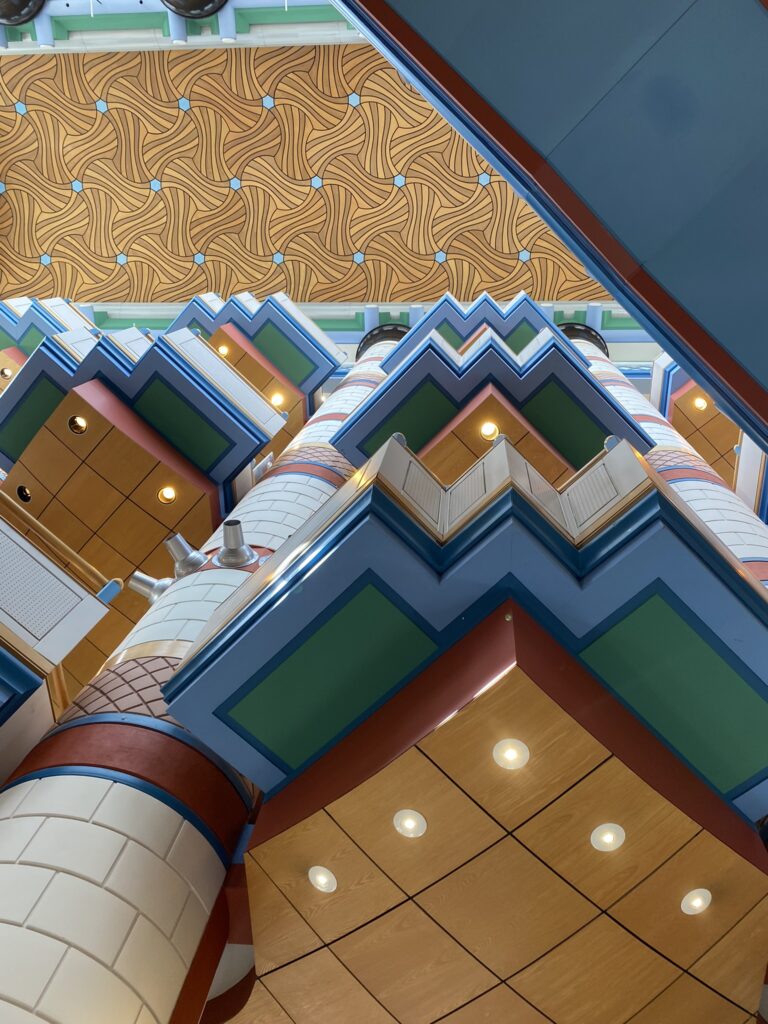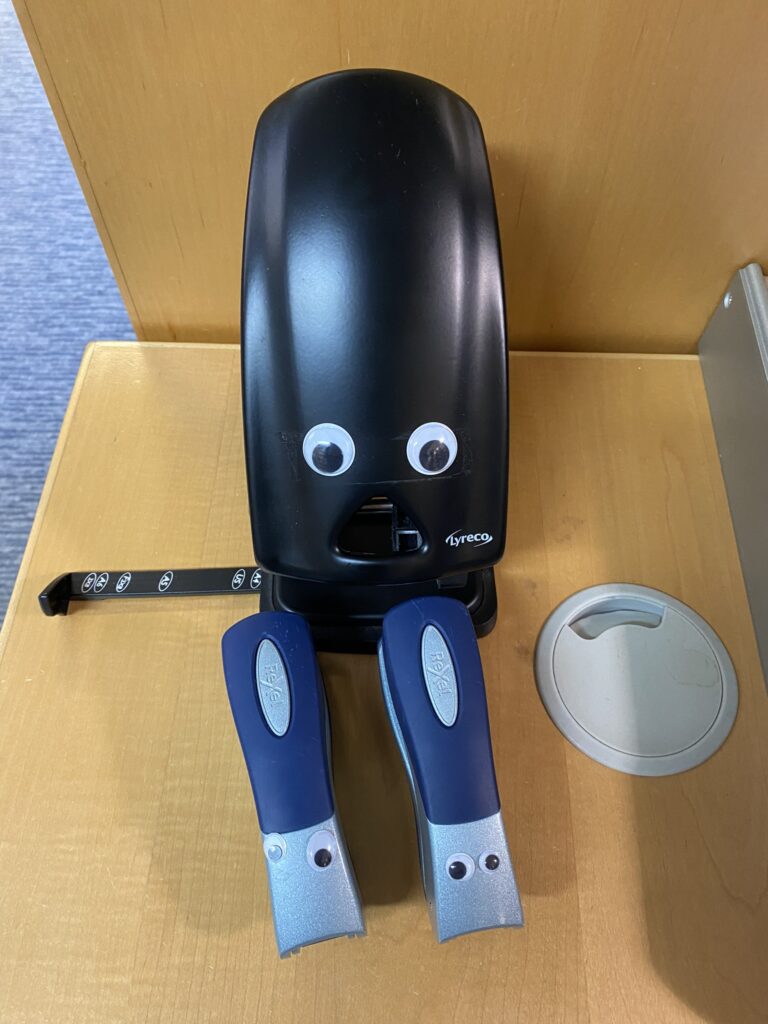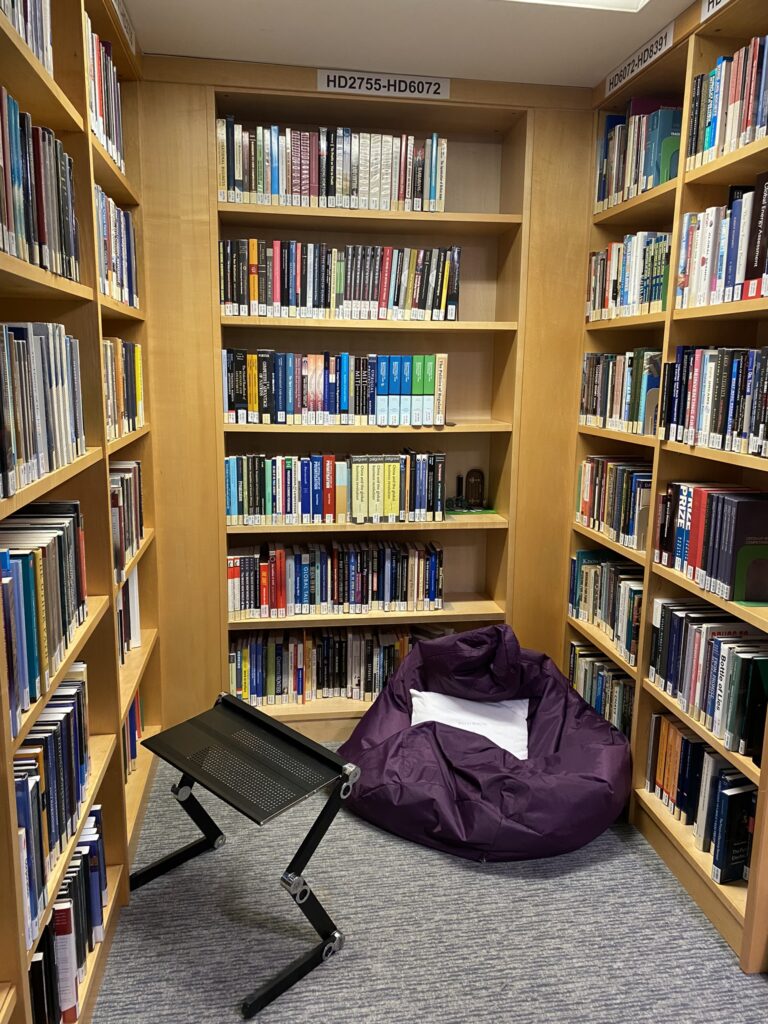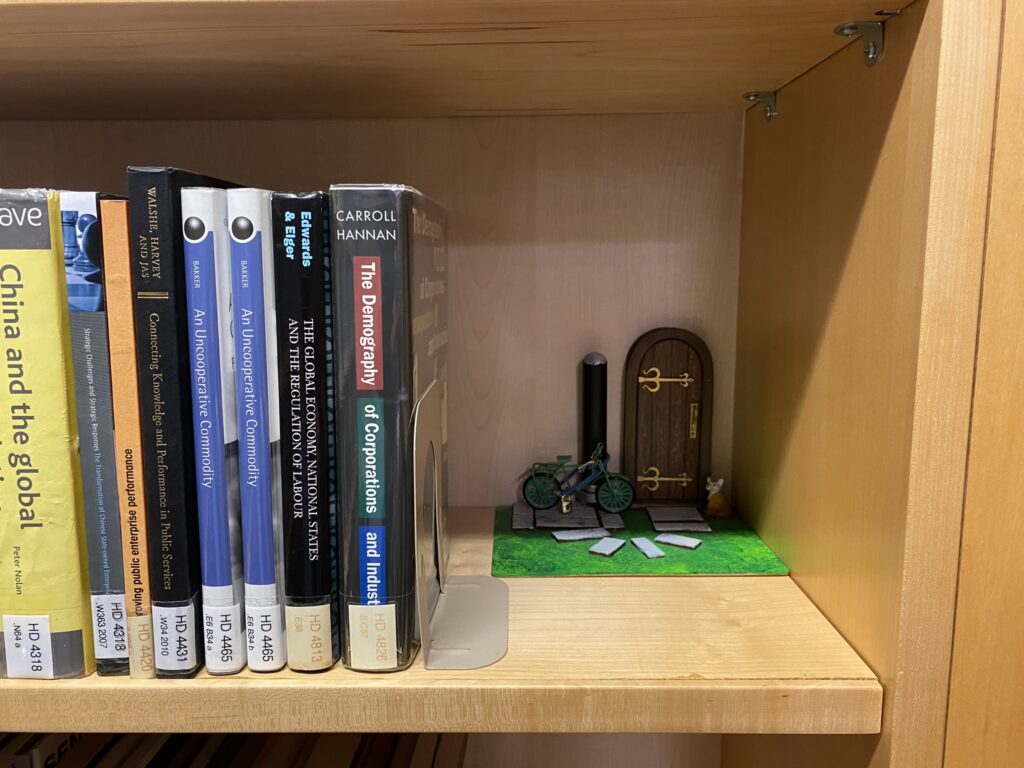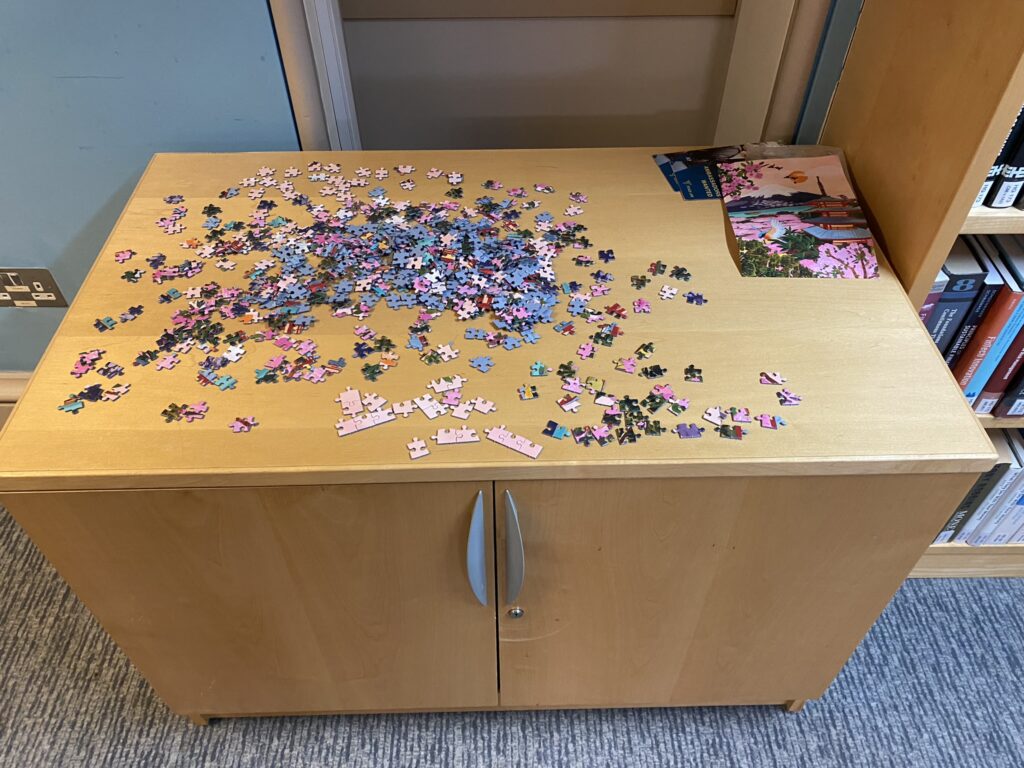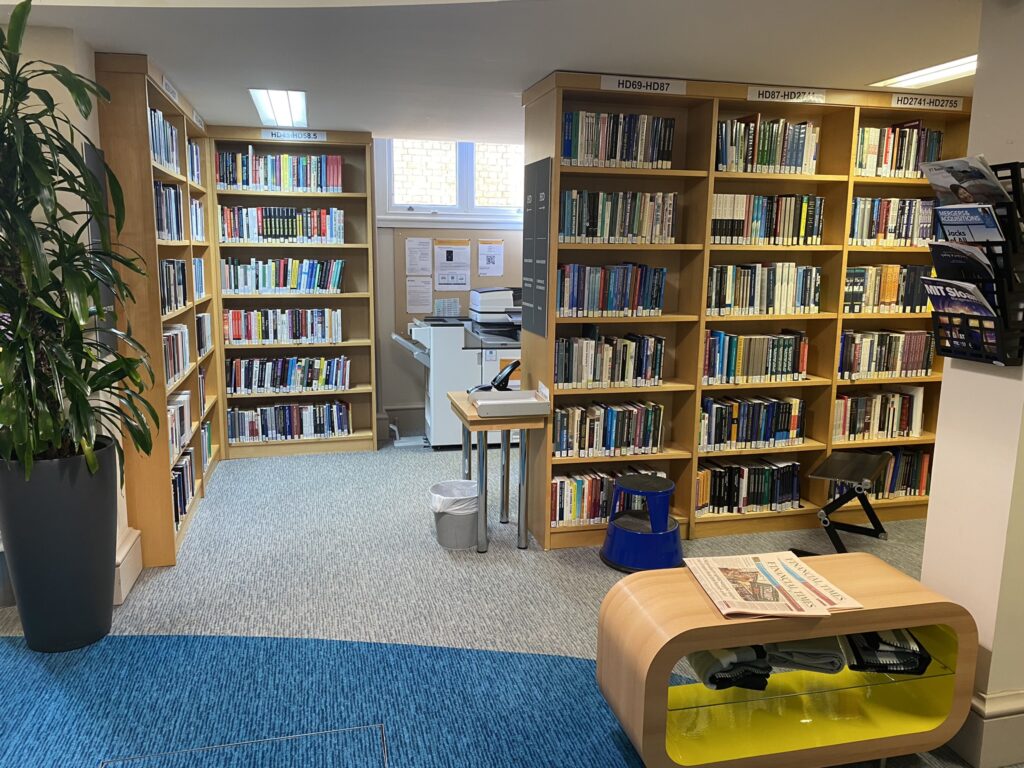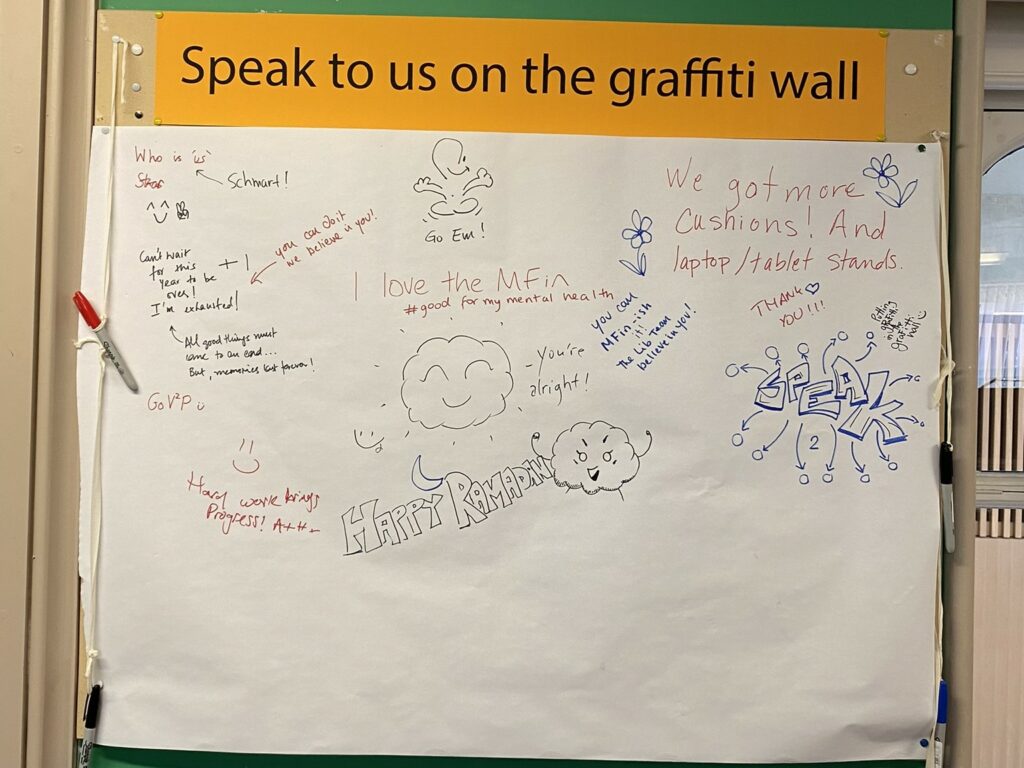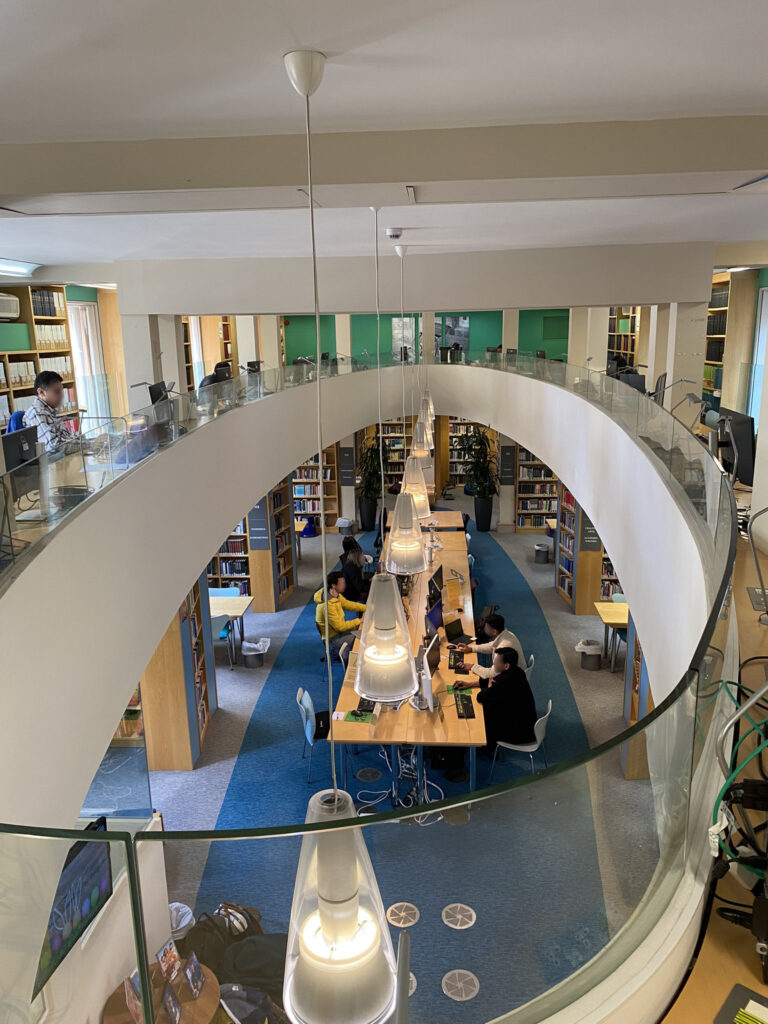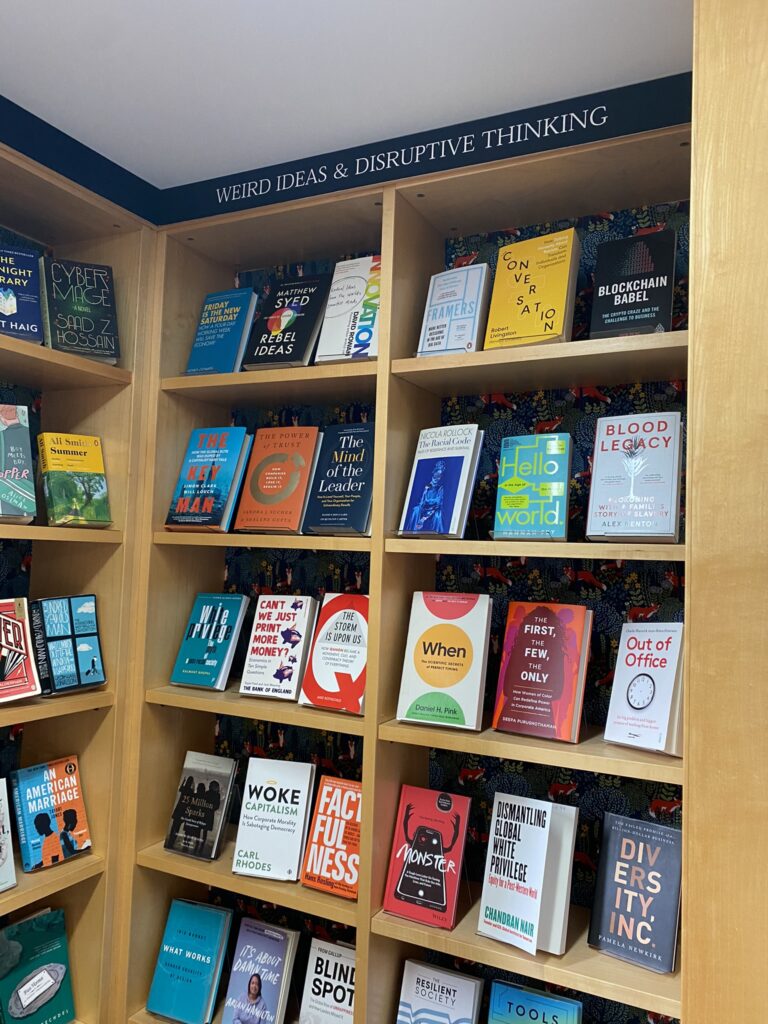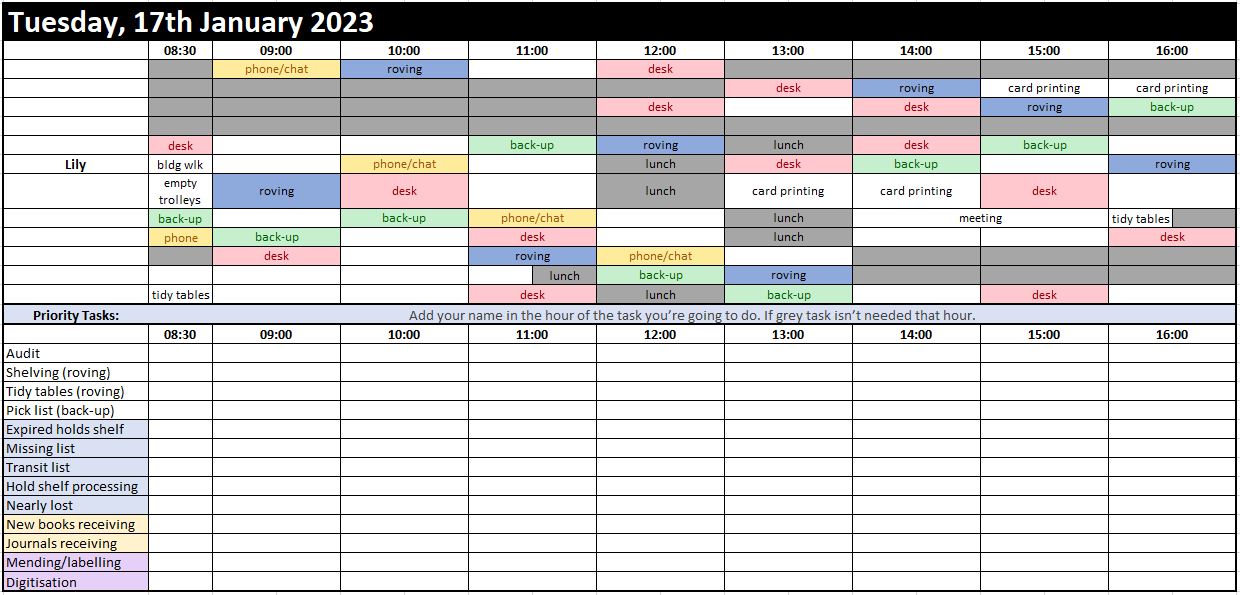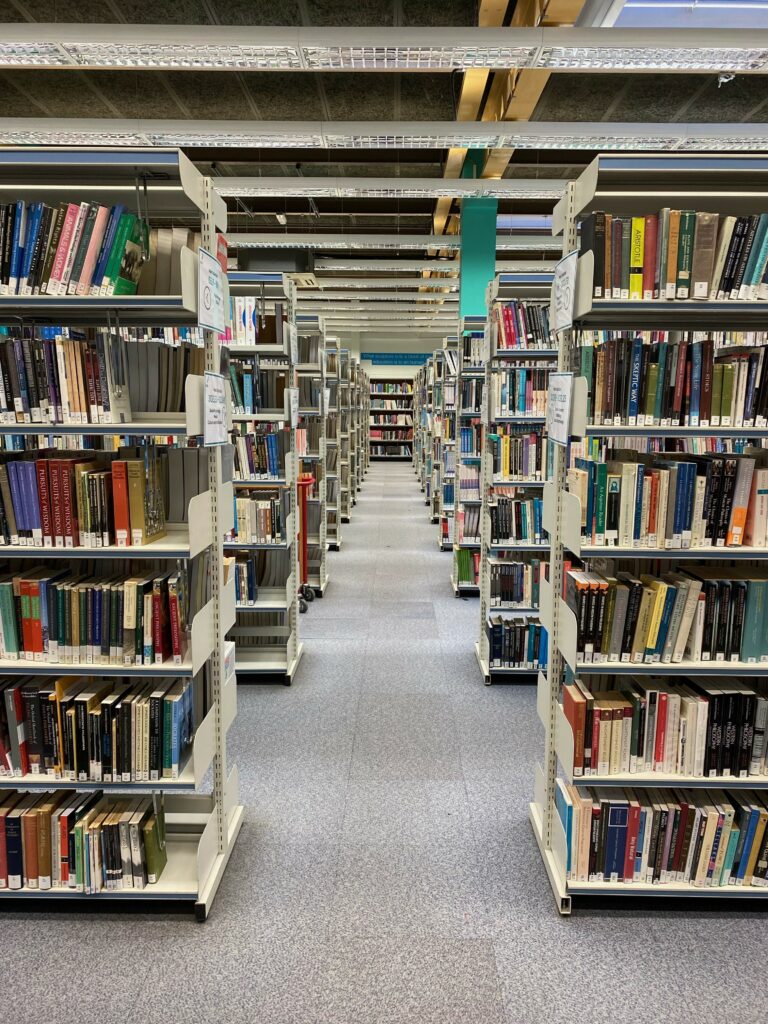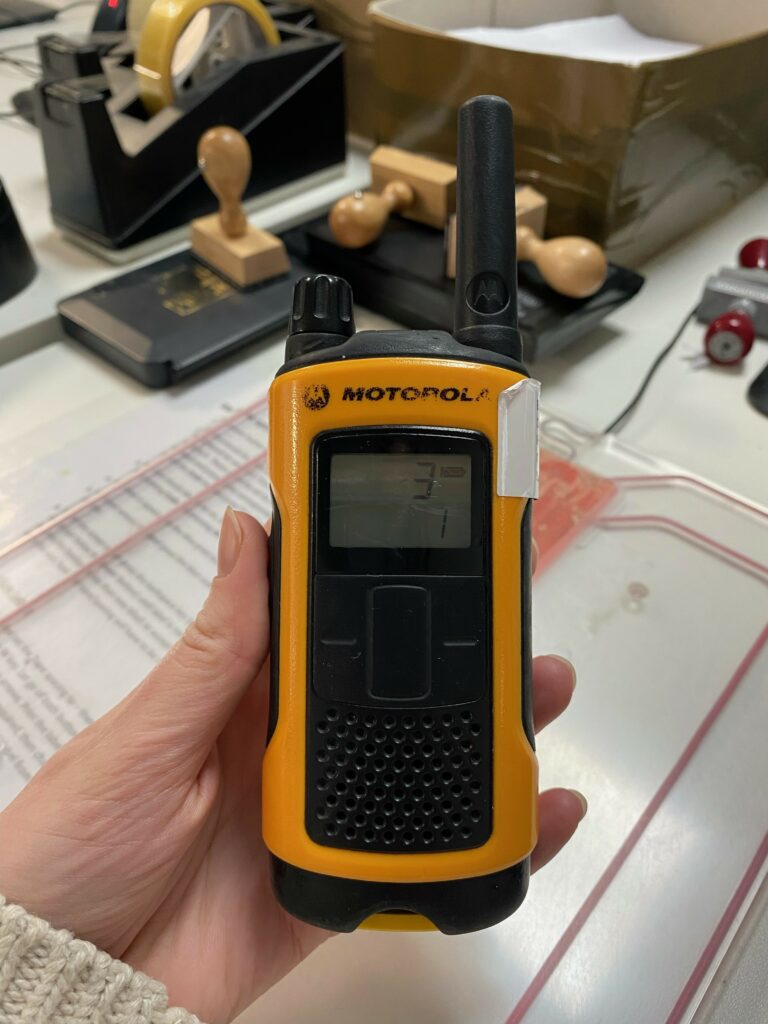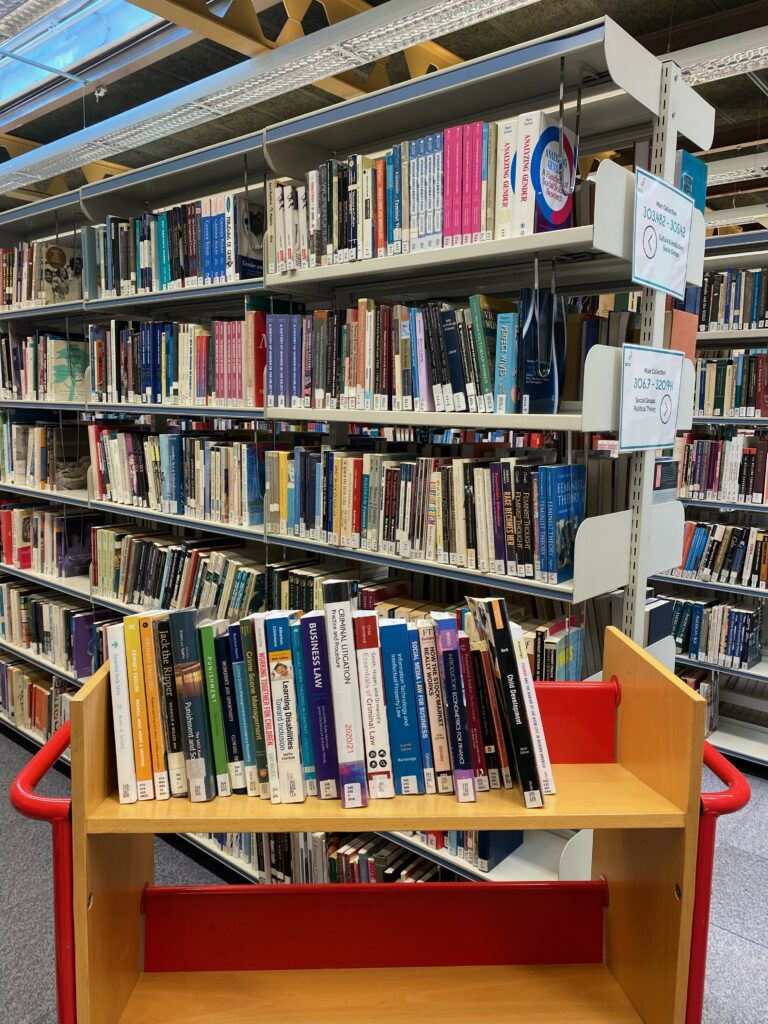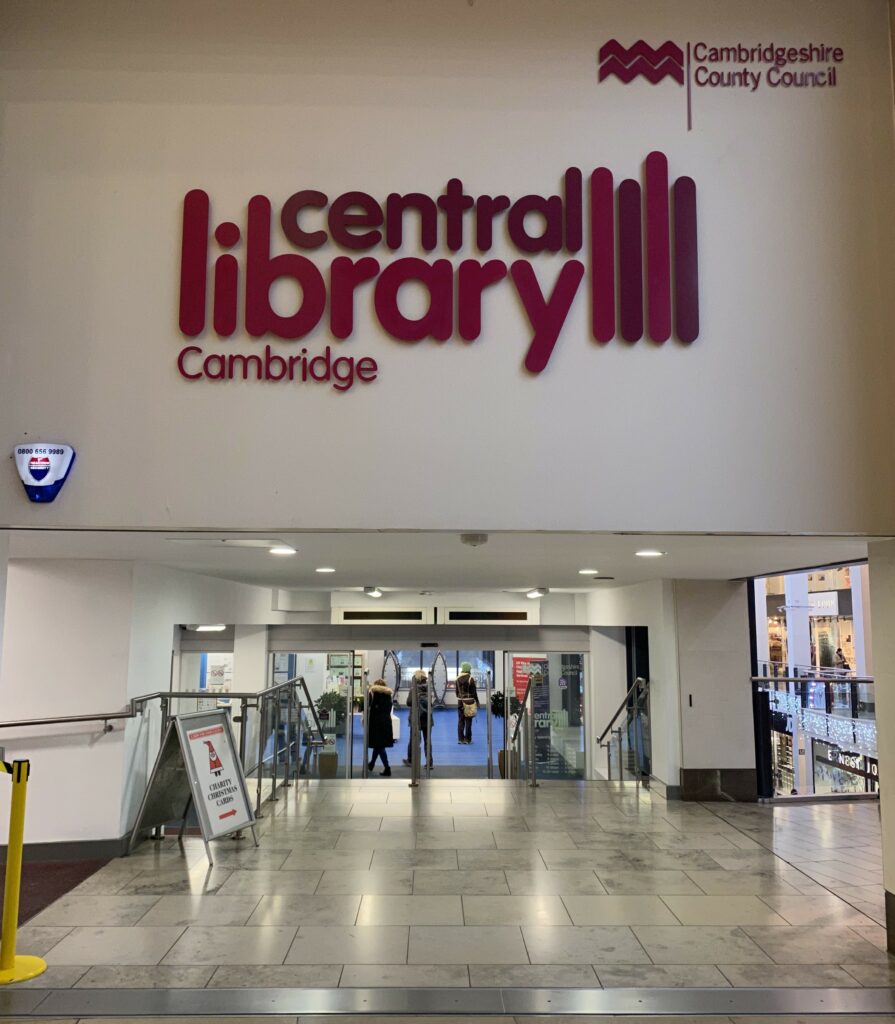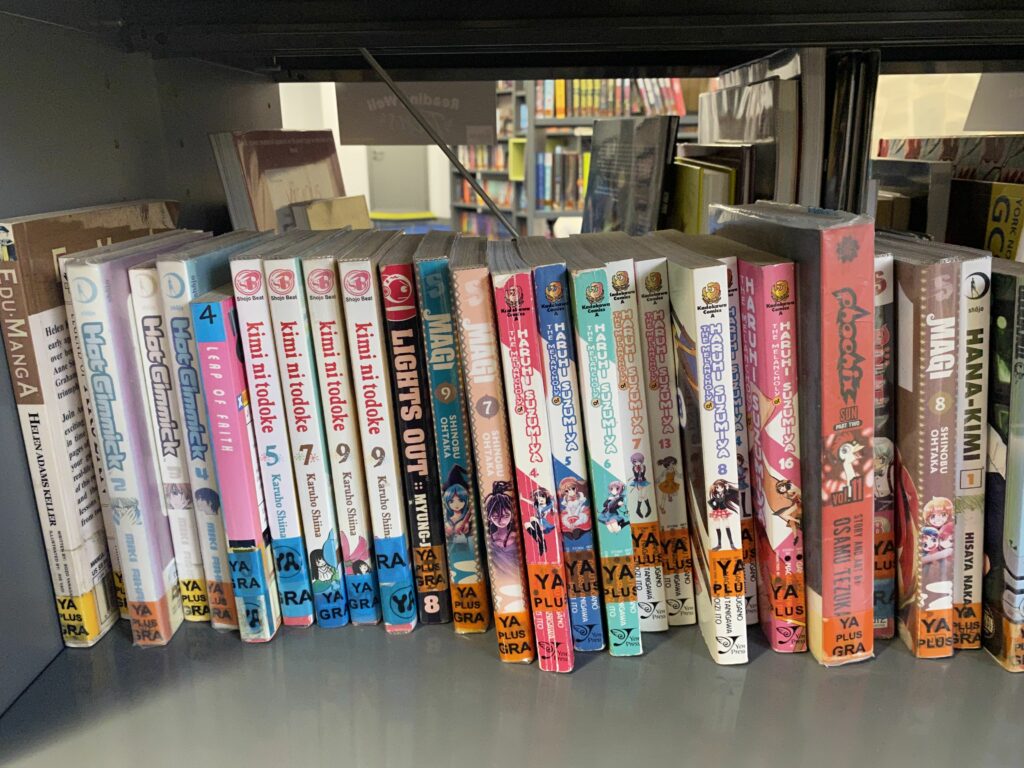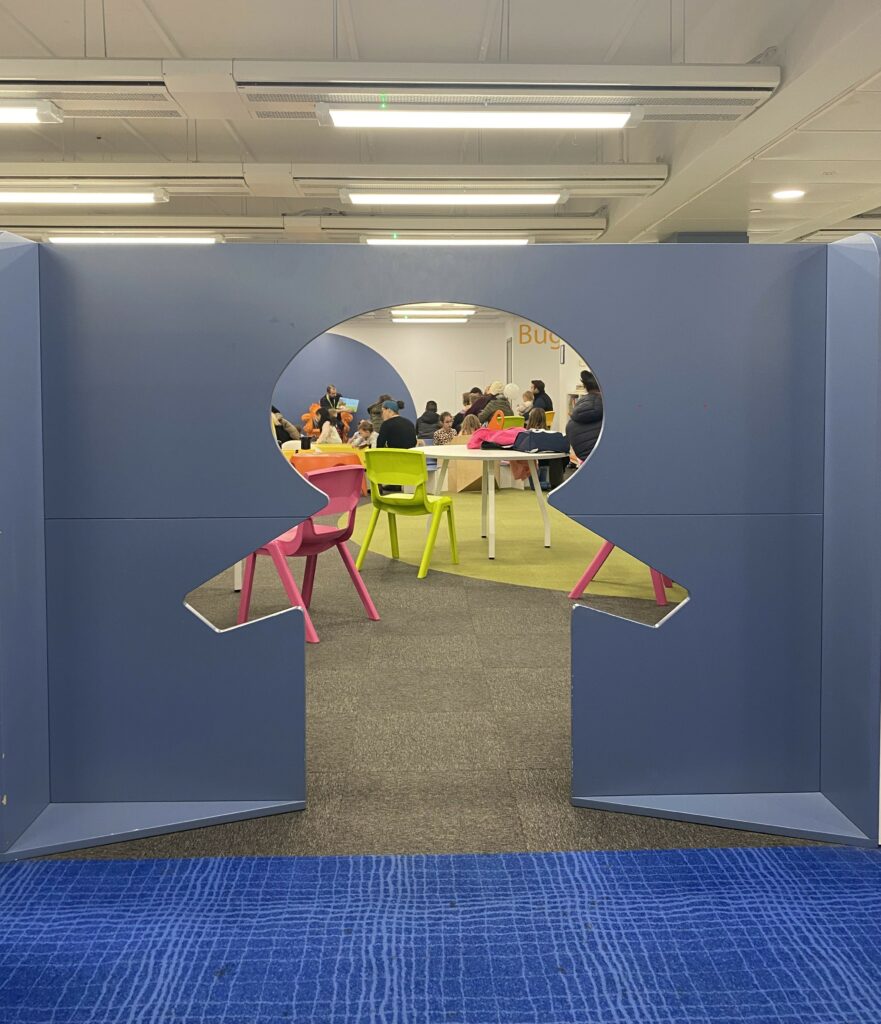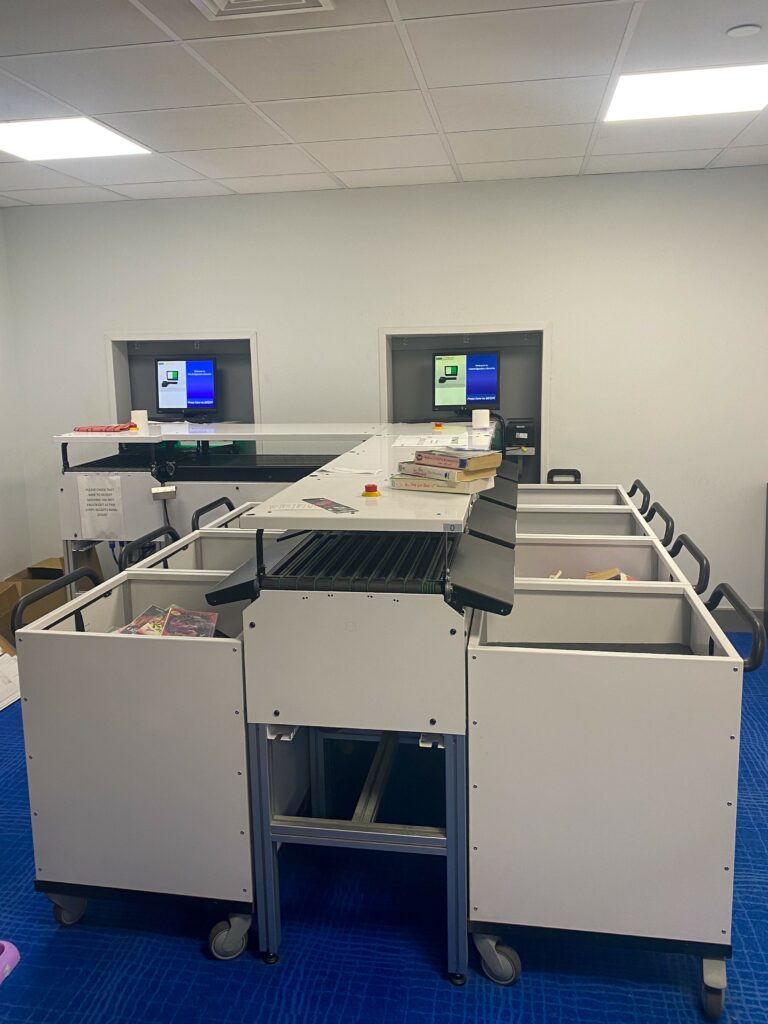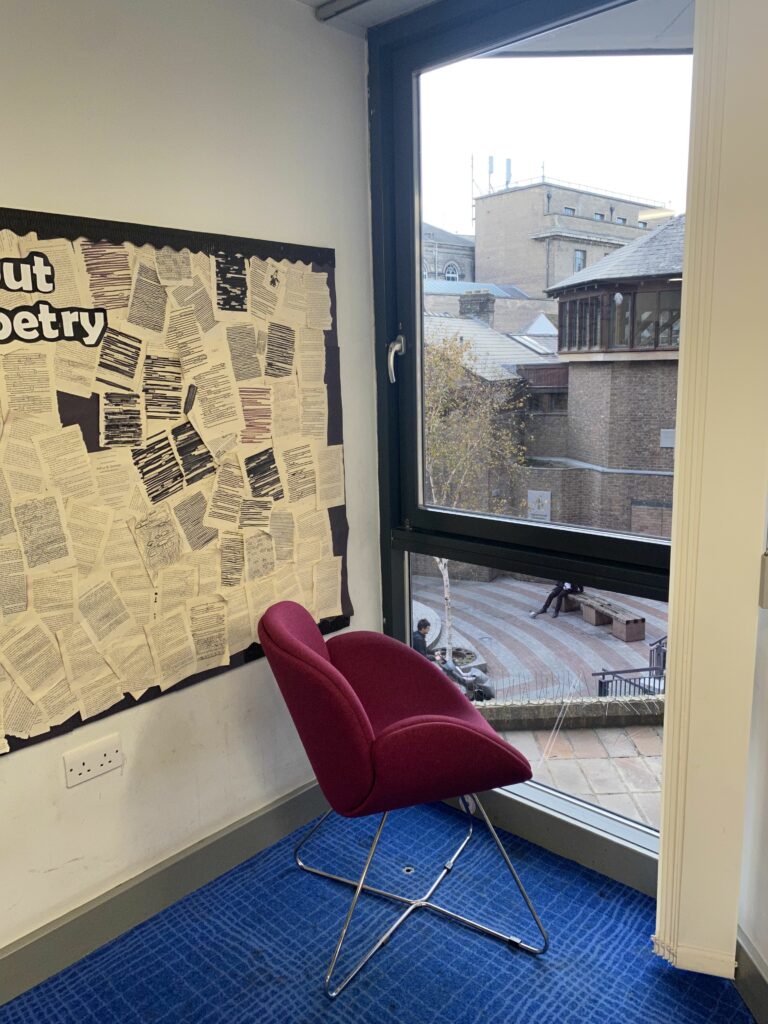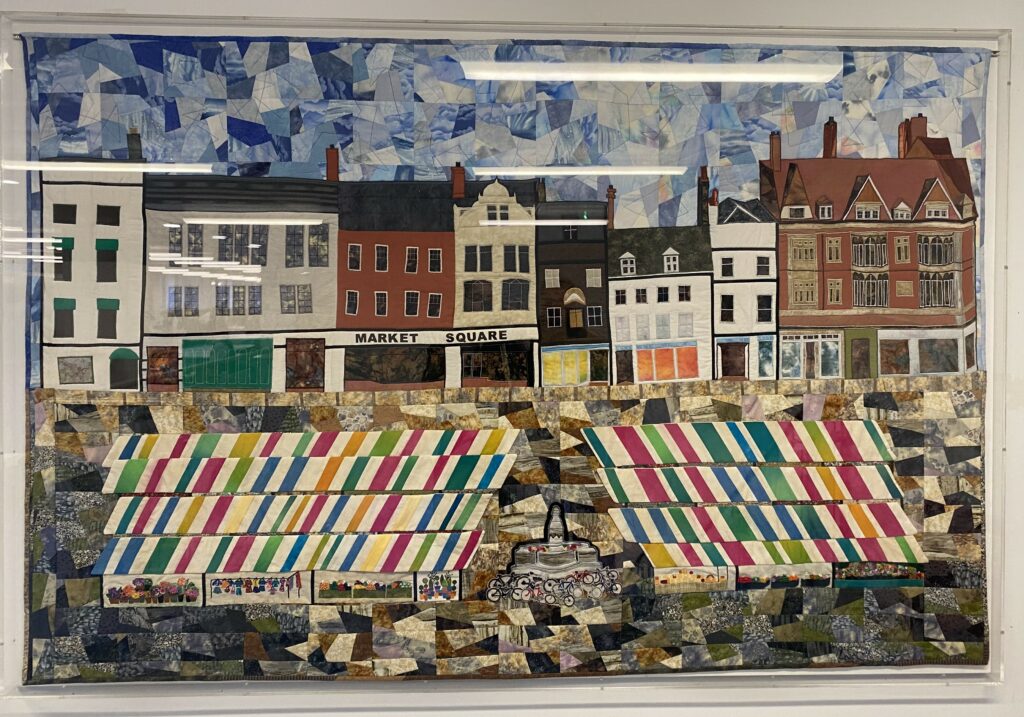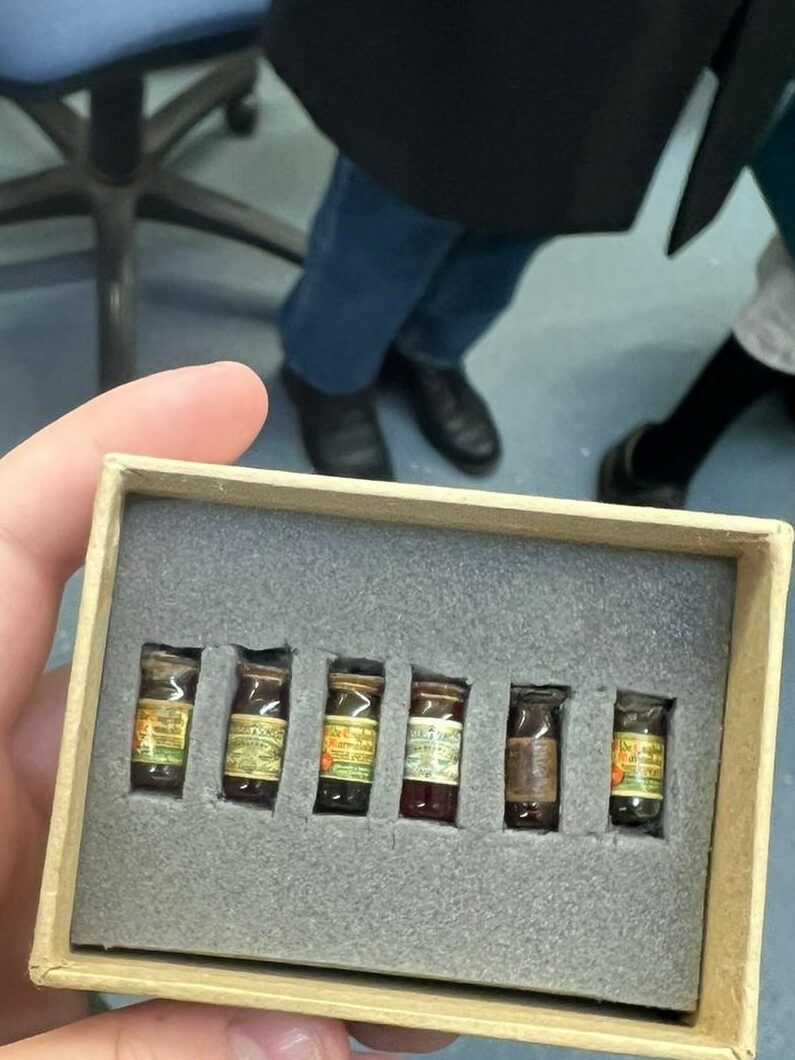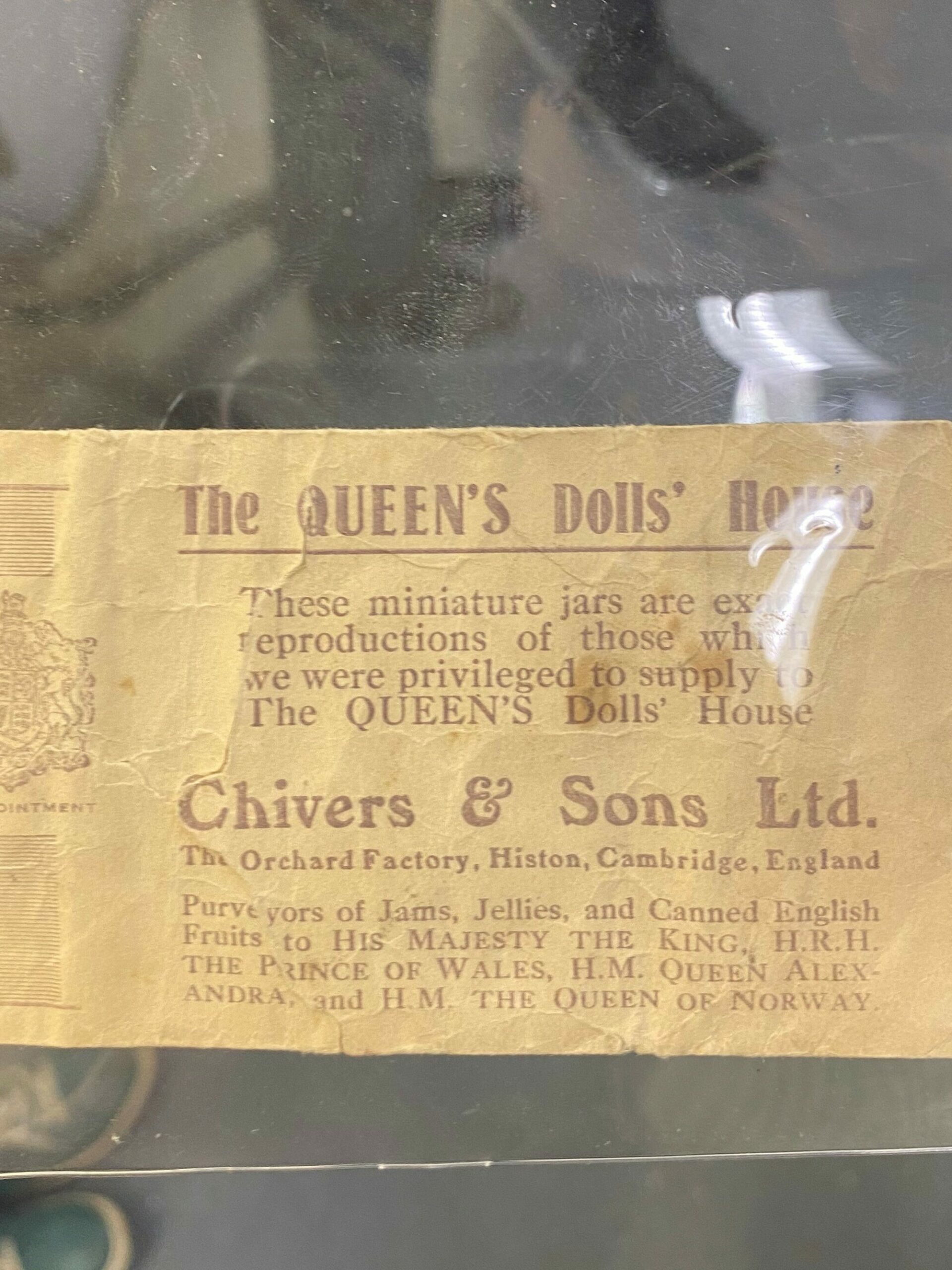In April, we were treated to two library visits in one day: Cambridge Judge Business School in the morning and the West Hub in the afternoon. Located on the University of Cambridge’s West Cambridge Site, the West Hub is a 10-minute cycle or a short bus journey from the city centre. It was a really lovely route, with the cycle path running parallel to the fields and heading towards the nearby village, Coton.
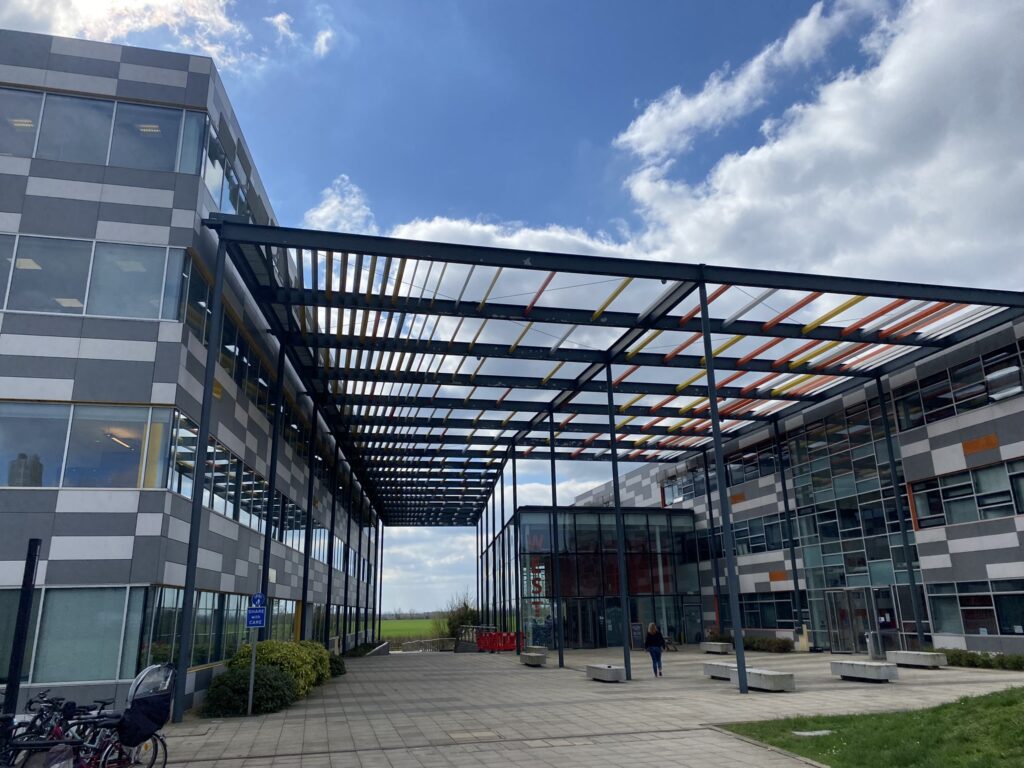
Home to the University Sports Centre, Cavendish Laboratory, Department of Veterinary Medicine, Whittle Laboratory and various commercial research institutes, the West Cambridge Site’s main focus is on physical sciences and technology. One of the Site’s newest buildings, the West Hub, opened on 26 April 2022 and represents the first step in the creation of the West Cambridge Innovation District.
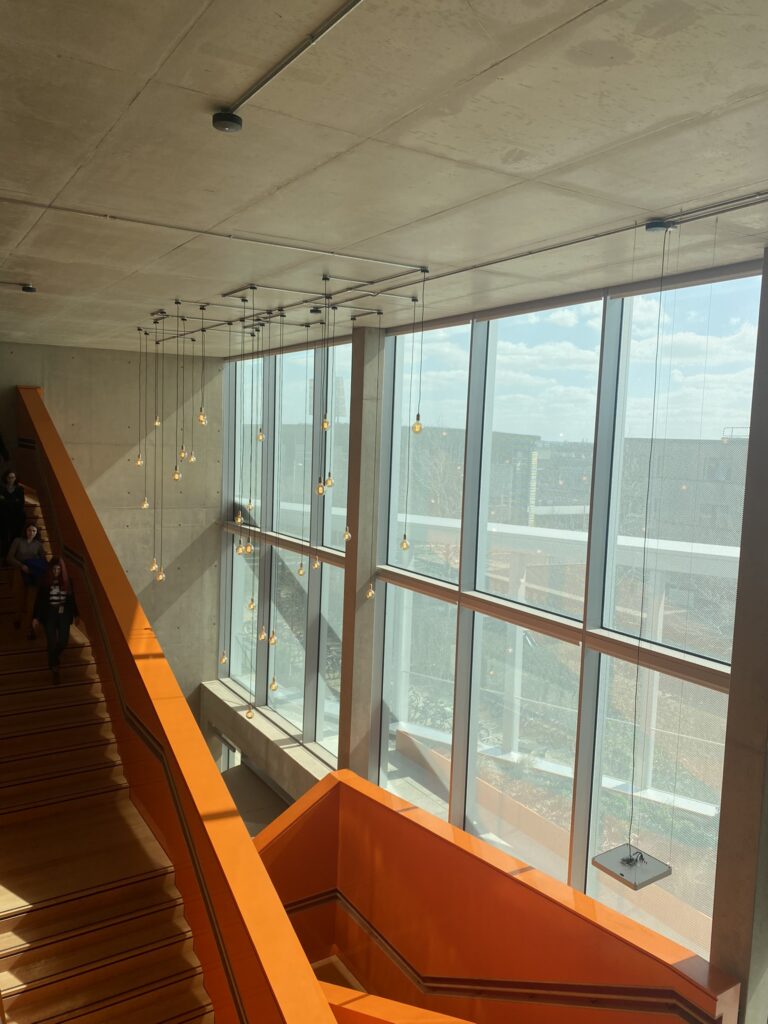
The West Hub is the University of Cambridge’s first publicly open co-working hub. With no restrictions on who can access the building, the space feels like a futuristic public library. On the ground floor, you can find a canteen, bar, newsagent, and even showers. Moving up the bright orange staircase, there is a rich variety of working areas (40 to be exact!) to suit different needs and moods. Interestingly, there are no zones for studying: the architect designed the building so that it naturally gets quieter as you move up the building. The Library Manager did note that students tend to be quiet in the North Room (where the books are located) though. Perhaps the visual cue of books is all it takes to inspire silence! It was an important and intentional decision to name the room with the books the North Room rather than the Library, so that the West Hub as a whole is understood to be a library.
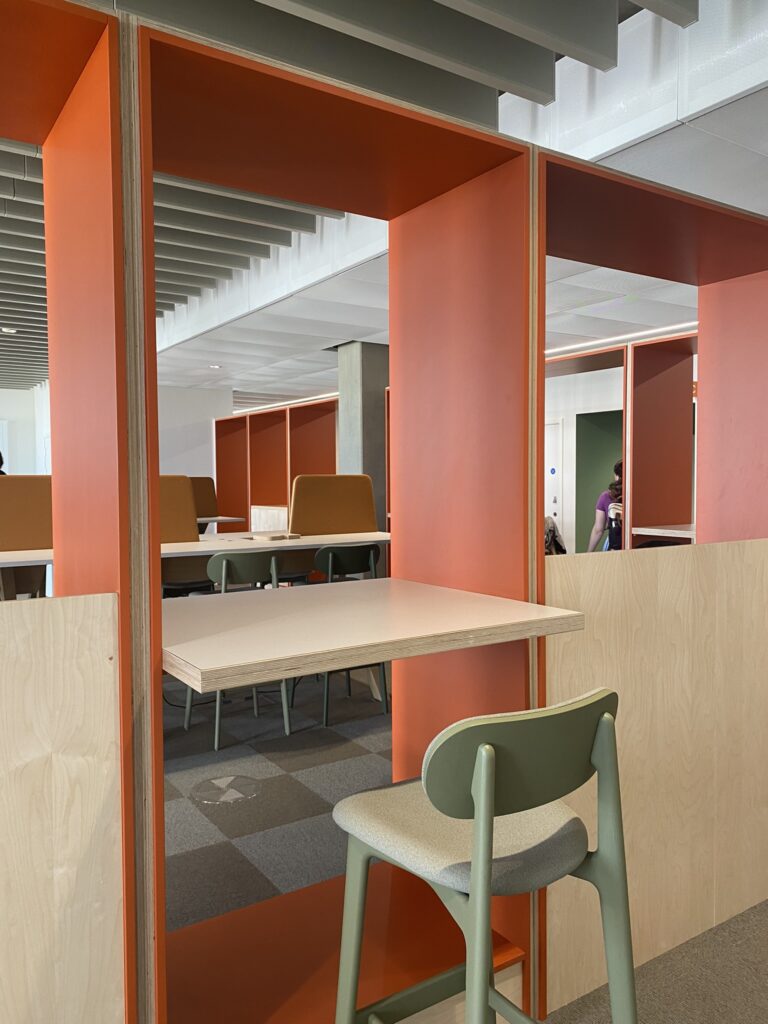
What struck me, was how accessible the space was. Unlike many buildings in Cambridge, the West Hub has step-free access, two lifts, wide corridors, accessible and gender-neutral toilets, baby change stations, spacious seating areas, and a mixture of high and low-tables. The West Hub’s relationship with nature is also inspiring. There are beautiful big windows overlooking green space, trees in the atrium growing toward the upper floors, and indoor plants dotted everywhere. Incorporating nature into the building is a clear indication of their desire to prioritise wellbeing and sustainability. The calming atmosphere is complimented by the availability of contemplation rooms, which are comfy, technology-free spaces to contemplate or have a conversation. Other bookable spaces include large meeting rooms, meeting pods, and a pop-up media lab.
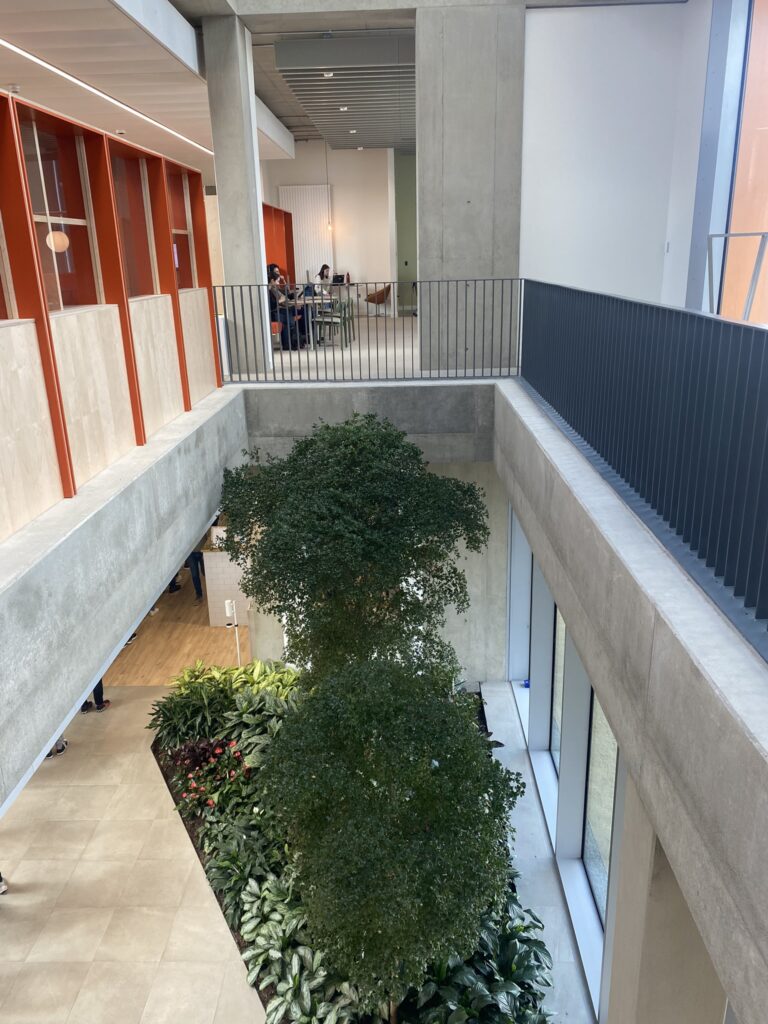
While in many ways the West Hub reimagines what a library is, it still maintains traditional services. The library desk is located on the first floor and as part of the Technology Libraries and Biological Sciences Libraries Team, it supports the Departments of Engineering, Computer Science, Chemical Engineering and Biotechnology, and Veterinary Medicine. The library staff offer standard study skills sessions (how to use the library, literature searches, referencing) alongside more personal sessions (designing a great poster, perfecting presentation skills, revision tips). In addition to the North Room, there is also a small ‘Inspire, Learn and Inform’ collection, which displays books from outside of the main subject areas. Although borrowing is restricted to University of Cambridge students and staff, non-members are welcome to reference the material inside the West Hub.
A massive thank you to Danielle, the Library Manager, for providing such an engaging tour and to the rest of the West Hub team for sharing their expertise with us.


